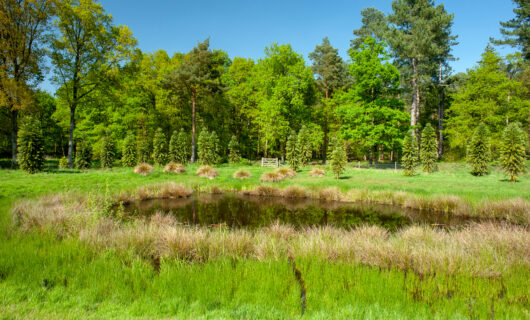There’s something about Mary; Essex Women’s Commemoration Project honours former inhabitant of Marks Hall near Coggeshall
On Saturday 24th September 2022 Simon Brice unveils a commemorative plaque at the site of the Essex home of Mary Honywood, a sixteenth-century sustainer of Protestant martyrs.
Markshall Estate was delighted to be approached by the office of the Lord Lieutenant of Essex and The Coggeshall Society, to arrange a blue plaque to honour the life of Mary Honywood. Launched in 2020, the Lord Lieutenant’s Essex Women’s Commemoration Project pays tribute to individual Essex women whose historic achievements deserve to be more widely recognised.
The first to be acknowledged by this project was Colchester-born Margaret Cavendish (1623-1673), whose commemorative plaque was unveiled adjacent to St John’s Abbey Gate in Colchester, in September 2021. Now it is time to pay tribute to Mary Honywood (1527-1620), once resident of Marks Hall, for her support of Protestant martyrs.
Along with her father and sister, Mary corresponded regularly with prisoners who, during the reign of Mary Tudor, had been incarcerated for their religious beliefs. One such was Rev Dr John Bradford, prebendary of St Paul’s, whom Mary visited frequently. She attended his execution in 1555 at which it is recorded that, ‘the press of spectators was so great that her shoes were trodden off, and she was forced to go barefoot from Smithfield to St Martin’s before she could buy replacements’.
Born in Kent, Mary moved to Marks Hall in 1605 to live with her son Robert and his family. A pious woman, during her life she suffered from religious melancholia, a form of depression. This is perhaps not surprising, since many of those with the same beliefs were imprisoned, and she had witnessed executions like that of John Bradford. Fortunately though, Mary’s depression lifted, as recounted by Thomas Moreton the Bishop of Durham, when one day, ‘God suddenly shot comfort like lightning into her soul, so that she led the remainder of her life in spiritual gladness.’
There is something else about Mary that, for her era, was quite remarkable. By the time she died in 1620 she had reached the grand age of ninety-three. She had lived to see the birth of 16 children, 114 grandchildren, 228 great grandchildren and 9 great great grandchildren – an impressive total of 367 descendants born during her lifetime. Little wonder then, that one of her descendants would later remark that Mary had established ‘a lively, important and numerous new branch of the family.’
More news
See more
-

Happy 17th Birthday to one of the largest collections of Wollemi pines in Europe!
Thursday, 17th October 2024, marks 17 years since a collection of one of the world’s rarest trees was planted in […]
-

Remembering Jonathan Jukes
The Trustees were very sad to learn that Jonathan Jukes who worked at Markshall from 1985 until 2018 has died, […]
-

Essex County Council Volunteers Revitalize Historic Iron Bridge and Arboretum Bridge
Last week, the historic Markshall saw a heartwarming display of community spirit as volunteers from Essex County Council dedicated their […]